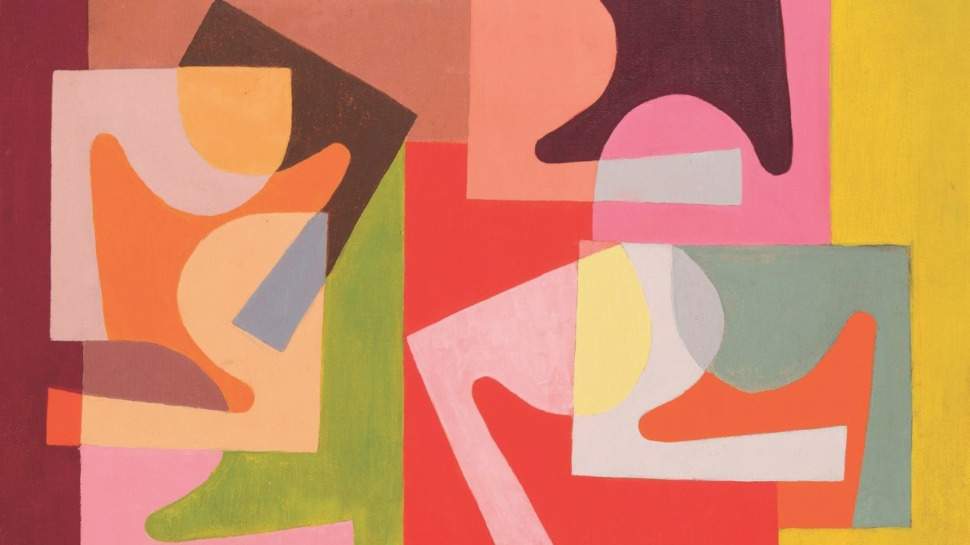From May 5 to August 23, 2021, the Centre Pompidou in Paris offers the public the exhibition Elles font l’abstraction, dedicated to the women of abstractionism: the exhibition, curated by Christine Macel (former curator of the 2017 Venice Biennale), has the ambition to write the history of the contribution women have made to abstractionism, through one hundred and six women artists and more than five hundred works between the 1860s and the 1980s, as well as to uncover little-known artists, both to the public and to specialists. The exhibition also aims to valorize the work of many women who have suffered from lack of international visibility and recognition: the perspective will be on the paths of women artists, and in particular the contribution they made to the history of abstraction.
The exhibition will also emphasize aspects that have marked the evolution of the language of women abstractionists, without placing itself in the perspective of a simple cataloguing: it will also discuss contexts, individual and group research, and key exhibitions. In addition, the review will transcend the hierarchies between “high” and “low” arts: the approach will be all-encompassing and will invest expressive forms such as dance, decorative arts, photography, and cinema, all supported by documents and videos, in a multidisciplinary perspective that will not even neglect the contribution of other continents (Latin America, the Middle East, and Asia) to tell a story with many voices.
According to the organizers, most exhibitions devoted to the history of abstract art have often overlooked the fundamental role played by women in the development of this plastic language (think of the role of Hilma af Klint, also discussed on these pages). The latest historiographical advances, deepened by the many recent monographs and thematic exhibitions, now make it possible to reassess the importance of women’s contributions. Again, the review intends to upset some historical assumptions about the chronology of abstraction and question old historical patterns, while not trying to rewrite a new one.
Finally, Elles font l’abstraction intends to integrate the history of feminism in the 1970s with the struggles led by artists and theorists, and to question the legitimacy of the notion of the “woman artist” by giving an account of the artists’ own positions, with their complexities and paradoxes. Many have effectively positioned themselves beyond gender, while others claim “female” art. Based on the observation that art history is constantly being rewritten with the help of new narratives, Elles font l’abstraction thus aims to propose another history of abstraction, with a view to what the curator hopes may be a future rewriting of art history in order to integrate the women artists the exhibition presents.
Among the women artists included in the itinerary will be Louise Bourgeois, Rosemarie Castoro, Georgiana Houghton, Verena Loewensberg, Helen Frankenthaler, Elaine de Kooning, Lee Krasner, Saloua Raouda Choucair, and among the Italians will be Regina Cassolo Bracchi (to whom, moreover, the first monographic exhibition in an Italian museum is dedicated, open from April 28 at GAMeC in Bergamo), Dadamaino, Carla Accardi, and Giannina Censi. “The invisibilization of women artists in this history,” said curator Christine Macel, “also passes through the lack of their representation, their visual embodiment, and the dissemination of these images, which seem to be inversely proportional to those of their male colleagues who embody the myth of pioneering genius, in what has been virulently called, with a military metaphor, the ’avant-garde.’”
For info on the exhibition you can visit the Centre Pompidou website.
Photo: Saloua Raouda Choucair, Fractional Module, detail (1947-1951). Courtesy Galerie Saleh Barakat © Saloua Raouda Choucair Foundation © DR / Saloua Raouda Choucair
 |
| At the Centre Pompidou there will be a major exhibition on the women who made abstractionism |
Warning: the translation into English of the original Italian article was created using automatic tools. We undertake to review all articles, but we do not guarantee the total absence of inaccuracies in the translation due to the program. You can find the original by clicking on the ITA button. If you find any mistake,please contact us.